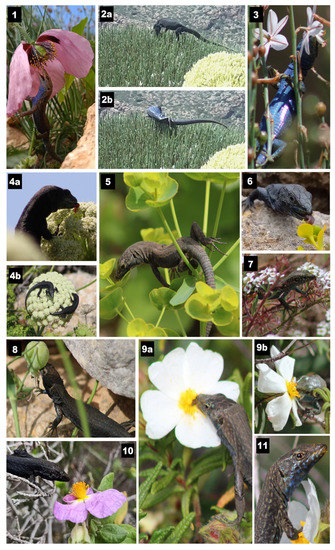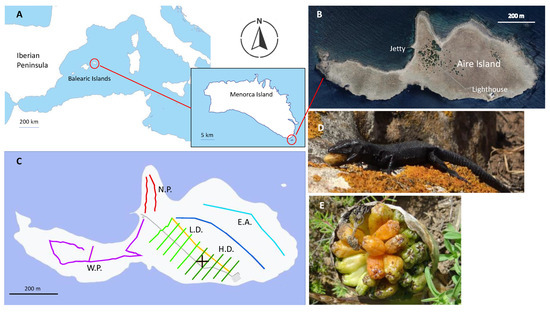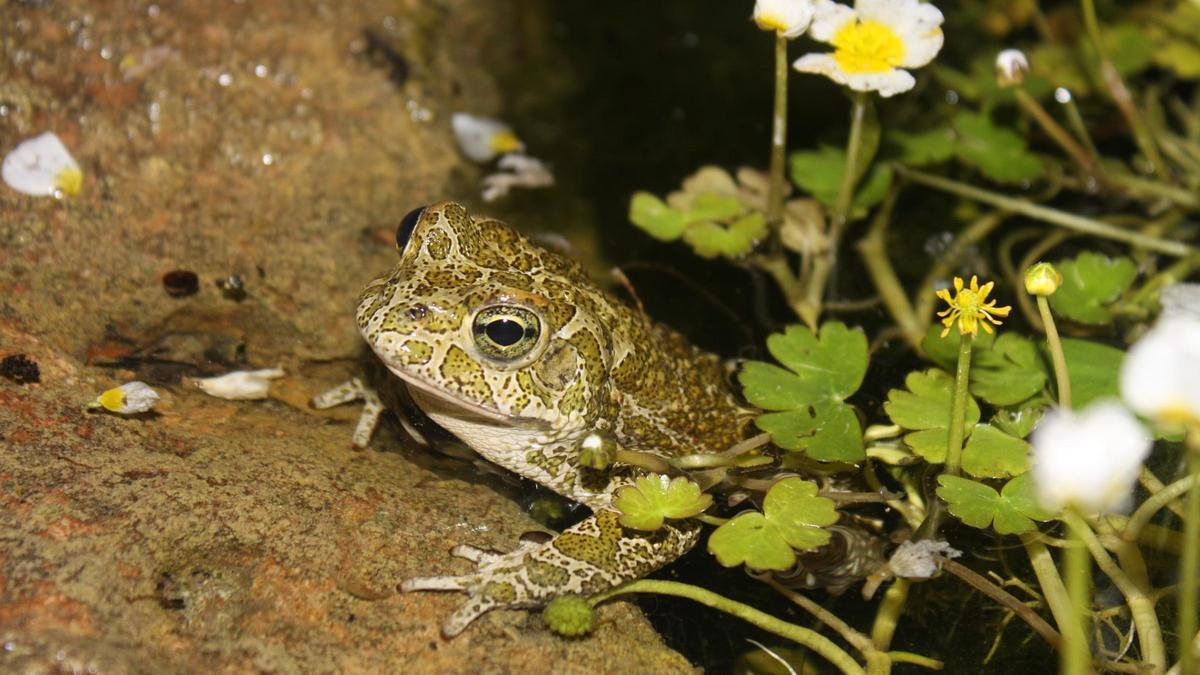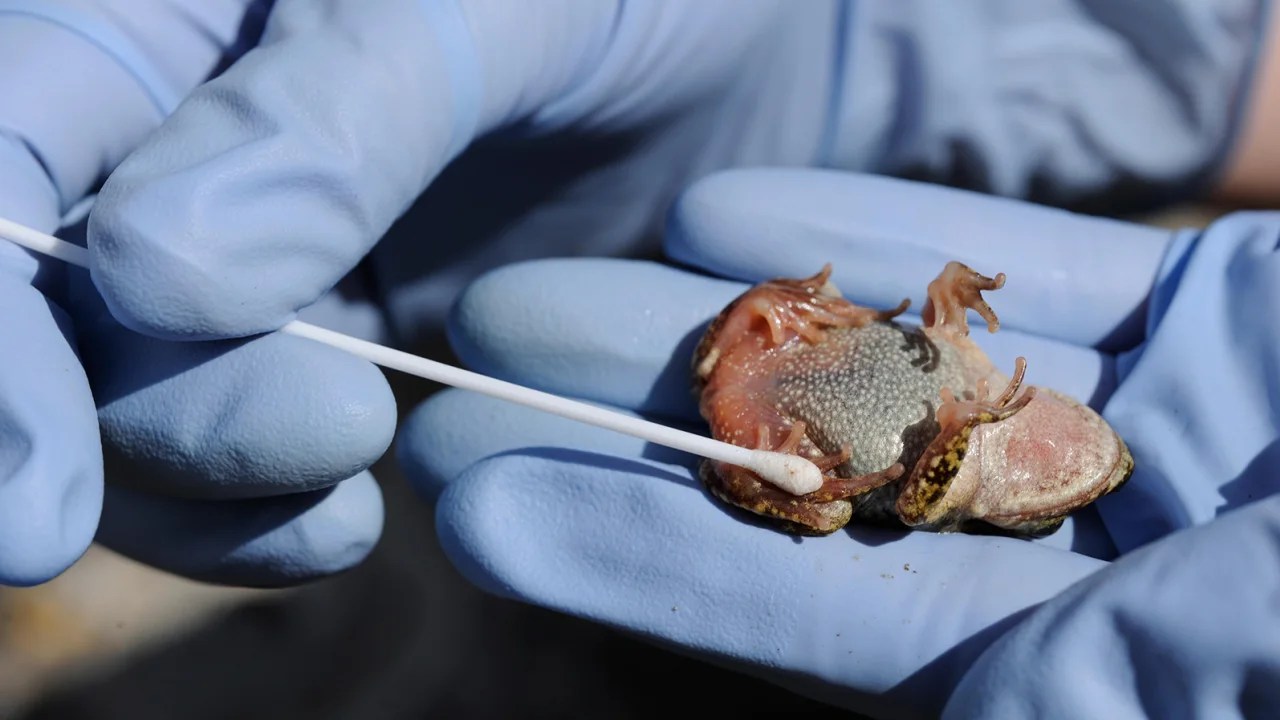The role of lizards as potential pollinators is increasingly recognized, especially on islands. However, there are very few studies at the community level that have also addressed intraspecific variations related to the consumption of floral resources. We pursued this objective on the island of Cabrera Gran (Balearic Islands) where there are the Balearic wall lizards (Podarcis lilfordi) and two geckos (Tarentola mauritanica and Hemidactylus turcicus). Balearic lizards have proven to be potential community-level pollinators by interacting with many different plant species to varying degrees. Although in some plant species lizards damaged reproductive structures by feeding directly on them, legitimate visits were significantly more frequent. Intraspecific differences were found in these wall lizards and even indications of gecko–flower interactions. These findings expand our knowledge not only on the magnitude of lizard–plant community interactions but also in their complexity. Leer más.
















